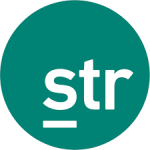As spring break season approaches, tracking school calendar data becomes critical for predicting travel demand across the U.S. The swings from one academic year to another can generate substantial waves in hotel performance, since vacation scheduling directly impacts over 50 million public K-12 students across the country, not to mention their families.
Beginning with the second weekend of March, spring break 2023 will kick into gear for school districts around the U.S. From Saturday, 11 March through Friday, 17 March, roughly one third of all K-12 students will be on break and available to travel. By the end of the week, the percentage of students on break will reach 44% nationwide — the first major peak of the spring break season.
This proportion will dwindle a bit the following week, fluctuating between 13% and 22% between Monday, 20 March and Sunday, 26 March. The next week, vacations become even less common with the percentage of students on break hovering around 11% for most of the week (and a slight lift to 15% on Friday, 31 March).
This year, Easter will shift forward by one week, which will alter dozens (if not hundreds) of K-12 school district calendars along with it. Beginning the weekend of Saturday, 1 April, we will see a boost of 16 percentage points (up from 23% in 2022 to 39% in 2023) in terms of K-12 students on break year to year. We’ll continue to see roughly this same increase until Good Friday (7 April) when this elevates to an increase of 37 ppts over last year. Given that STR’s sample of K-12 calendar data covers 26 million students, this translates to an additional 9.6 million students on break for this date in 2023 versus the matching Friday in 2022. Because STR’s sample covers 53% of the K-12 students in the U.S., we can extrapolate that the real number of additional students is probably roughly twice that amount.
This boost will smooth out a bit over the following few days. There’s a positive 24 percentage point boost on Saturday, 8 April and Sunday, 9 April (keep in mind that these two days will be, in an absolute sense, the peak of spring break in 2023). On Monday, the boost above the matching day in 2022 falls to 16 percentage points.
The following weekend, the inevitable slingshot effect will swing the landscape of vacation availability in the opposite direction. By the weekend of Friday, 14 April — which corresponds to where Good Friday fell last year —we’ll see an average drop of 27 ppts in students on break. This peaks at a 35 ppt drop on Monday, 17 April. In the following week through Sunday, 23 April there will be an average of 12 percentage points fewer students available to travel each day compared to 2022.
The realized impact of these swings in availability on actual U.S. travel remains to be seen, but hoteliers and others in the hospitality industry would be wise to anticipate shifts in demand corresponding to the ebbs and flows of spring break scheduling. Adjustments to summer break scheduling may also impact travel availability as we look ahead to May and June of this year. Learn more about how our School Break Report can help unveil complicated calendar patterns for the remainder of this academic year.


